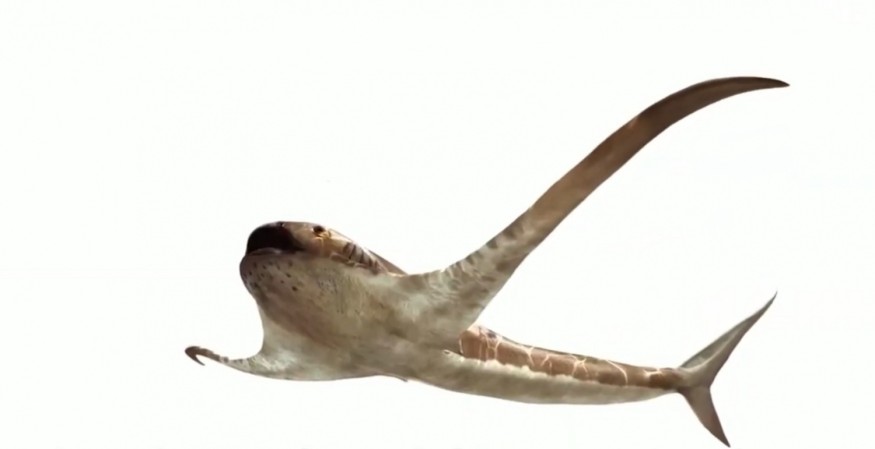A quarry worker discovered in 2012 from a rock layer in northeastern Mexico a fossil of a bizarre shark that can be dated back to 93 million years ago. The fossil is now dubbed as eagle shark or Aquilolamna milarcae.
The eagle shark's most distinctive feature is its wing-like fins that help it glide through the ancient seas like manta rays. It spans roughly two meters from tip to tip, wherein its length is comparable to the wingspan of bald eagles.
The study entitled "Manta-like planktivorous sharks in Late Cretaceous oceans" is published on March 4 in the journal Science.

An "eagle shark" swam in late Cretaceous oceans
Eagle Shark Gliding Through Ancient Seas
According to Science News, the eagle shark has a broad, rounded head, with long jaws and small teeth which may hint that it was a filter feeder that sucks in floating plankton from the water.
Its torpedo-shaped body and high tail fin suggest that the eagle shark was an active swimmer. However, vertebrate paleontologist and lead study author Roman Vullo from France's National Centre for Scientific Research and the University of Rennes said that t it might not have been a fast swimmer.
"You could make the analogy of a glider... it wasn't at all adapted to swimming fast and following prey," Vullo said.
Its unusual fins have a size of 1.9 meters and have a length from head to tail of about 1.65 meters, which left scientists amazed.
According to Reuters, the name Aquilolamna means eagle shark for its slender pectoral fins that primarily act as stabilizers.
Vullo said that the eagle shark could be described as unusual, unique, extraordinary, bizarre, and weird. He added that the eagle shark is also the only shark species that is wider rather than longer.
The researchers believe that the eagle shark may have been a member of the highly diverse group of sharks, like the megalodon sharks, modern great white sharks, and filter-feeding basking sharks.
Eagle Shark Was a Plankton Feeder
Vullo said that the eagle shark is more of a plankton feeder than a predator. Before the discovery of the eagle shark, the only known plankton feeders are those large plankton eaters that lived during the Cretaceous period. These large bony fish are known as pachycormidae that went extinct after the Chicxulub meteor struck 66 million years ago.
According to Phys.org, the eagle shark is the second known plankton feeder during the second epoch, a time when dinosaurs were still roaming the surface of the Earth.
The eagle shark was little by little replaced by manta rays and devil rays during the Tertiary period after the pachycormidae died out.
But aside from the eagle shark, other bizarre sharks that swum the ancient seas include the prehistoric Helicoprion that had a mouth as a spiral saw, another prehistoric one known as Stethacanthus that has a dorsal fin that is shaped like an ironing board.
RELATED ARTICLE : Unbelievable! Study Reveals Actual Size of Megalodon Shark, One of the Largest Fish to Ever Exist
Check out more news and information on Sharks in Science Times.
© 2025 ScienceTimes.com All rights reserved. Do not reproduce without permission. The window to the world of Science Times.












